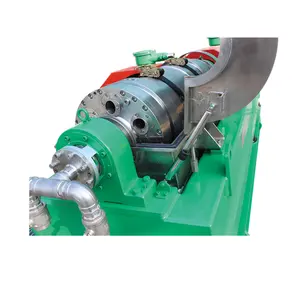
DTLSTAR Portable LCD Display Clinical Laboratory Hematocrit Centrifuge Small Blood Centrifuge For Clinical Use


Decanter Centrifuge Palm Oil Horizontal Decanter Centrifuges Industrial Centrifuge For Oil Separation





A blood separation centrifuge is a specialized device designed to separate blood components by density through centrifugal force. This process is crucial in various medical and research settings, where the separation of plasma, serum, and other blood components is required for analysis and treatment.
The application of centrifugation extends beyond mere separation; it is pivotal in diagnostic processes, therapeutic protocols, and research activities. Devices range from those adept at separating plasma from blood to machines capable of isolating delicate cellular components. In clinical laboratories, the separation of blood plasma and serum is a routine yet critical task, while research facilities may require the centrifugation of whole blood for more detailed studies.
Modern blood plasma centrifuges are equipped with features that cater to the precise needs of separation tasks. They are constructed from durable materials that withstand high-speed rotations and ensure the integrity of the samples. The design of these centrifuges often includes safety locks, temperature control systems, and programmable settings to facilitate the separation of serum and plasma from blood with efficiency and reproducibility.
The evolution of centrifugation techniques has led to enhanced separation capabilities, such as the ability to separate serum from blood with high precision. The refined control over centrifugal force allows for the separation of blood components by centrifugation without compromising the viability of the samples. This is particularly important when processing samples for sensitive assays or when preparing components for transfusion purposes.
Selecting the appropriate centrifuge involves understanding the specific requirements of the task at hand. Whether the need is to separate blood components for transfusion medicine or to prepare samples for biochemical analysis, the centrifuge must be tailored to the application. Factors such as rotor type, speed, capacity, and refrigeration capabilities play a significant role in the decision-making process.
Incorporating a blood separation centrifuge into a laboratory's workflow enhances the throughput and quality of sample processing. With advancements in automation, these devices can now handle larger volumes of blood before and after centrifuge cycles, streamlining operations and allowing for more time-efficient practices.